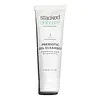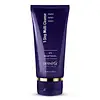What's inside
What's inside
 Key Ingredients
Key Ingredients

No key ingredients
 Benefits
Benefits

 Concerns
Concerns

No concerns
 Ingredients Side-by-side
Ingredients Side-by-side

Water
Skin ConditioningDisodium Laurylglucosides Hydroxypropyl Citrate
CleansingCocamidopropyl Hydroxysultaine
CleansingGlycerin
HumectantPropanediol
SolventDecyl Glucoside
CleansingInulin
Skin ConditioningCellulose
AbsorbentFructose
HumectantGlucose
HumectantPanthenol
Skin ConditioningXanthan Gum
EmulsifyingCellulose Gum
Emulsion StabilisingCopper Gluconate
Skin ConditioningSodium Benzoate
MaskingPotassium Sorbate
PreservativeSodium Phytate
Water
Skin ConditioningCocamidopropyl Hydroxysultaine
CleansingSodium C14-16 Olefin Sulfonate
CleansingAlpha-Glucan Oligosaccharide
CleansingPanthenol
Skin ConditioningSaccharide Isomerate
HumectantFructose
HumectantGlucose
HumectantSucrose
HumectantUrea
BufferingAlanine
MaskingAspartic Acid
MaskingGlutamic Acid
HumectantDextrin
AbsorbentAcrylates/C10-30 Alkyl Acrylate Crosspolymer
Emulsion StabilisingHydroxypropyl Methylcellulose
Emulsion StabilisingCarbomer
Emulsion StabilisingPhenoxyethanol
PreservativeHexylene Glycol
EmulsifyingTetrasodium Glutamate Diacetate
Ethylhexylglycerin
Skin ConditioningHexyl Nicotinate
EmollientCaprylyl Glycol
EmollientSodium Hydroxide
BufferingWater, Cocamidopropyl Hydroxysultaine, Sodium C14-16 Olefin Sulfonate, Alpha-Glucan Oligosaccharide, Panthenol, Saccharide Isomerate, Fructose, Glucose, Sucrose, Urea, Alanine, Aspartic Acid, Glutamic Acid, Dextrin, Acrylates/C10-30 Alkyl Acrylate Crosspolymer, Hydroxypropyl Methylcellulose, Carbomer, Phenoxyethanol, Hexylene Glycol, Tetrasodium Glutamate Diacetate, Ethylhexylglycerin, Hexyl Nicotinate, Caprylyl Glycol, Sodium Hydroxide
Ingredients Explained
These ingredients are found in both products.
Ingredients higher up in an ingredient list are typically present in a larger amount.
Cocamidopropyl Hydroxysultaine is a synthetic cleansing agent, though it is derived from coconut oil.
It is used to enhance the texture of products by boosting lather and thickening the texture. As a cleanser, Cocamidopropyl Hydroxysultaine is mild.
Glucose is a simple sugar and is the most important source of energy in all organisms.
In skincare, glucose is used to hydrate the skin. It also acts as a prebiotic for our natural biome.
Glucose is hydrating due to its humectant property. As a humectant, glucose draws moisture from the air and from deeper levels in the skin.
Our skin contains many sugars that act as prebiotics and help strengthen our natural microbiome. Having a healthy microbiome helps protect our skin from harmful bacteria and other contaminants.
Studies show glucose may help with fading discoloration and pigmentation. This is because our skin metabolizes glucose into lactic acid. Lactic acid is an AHA that helps exfoliate the top layer of skin.
Learn more about GlucosePanthenol is a common ingredient that helps hydrate and soothe the skin. It is found naturally in our skin and hair.
There are two forms of panthenol: D and L.
D-panthenol is also known as dexpanthenol. Most cosmetics use dexpanthenol or a mixture of D and L-panthenol.
Panthenol is famous due to its ability to go deeper into the skin's layers. Using this ingredient has numerous pros (and no cons):
Like hyaluronic acid, panthenol is a humectant. Humectants are able to bind and hold large amounts of water to keep skin hydrated.
This ingredient works well for wound healing. It works by increasing tissue in the wound and helps close open wounds.
Once oxidized, panthenol converts to pantothenic acid. Panthothenic acid is found in all living cells.
This ingredient is also referred to as pro-vitamin B5.
Learn more about PanthenolWater. It's the most common cosmetic ingredient of all. You'll usually see it at the top of ingredient lists, meaning that it makes up the largest part of the product.
So why is it so popular? Water most often acts as a solvent - this means that it helps dissolve other ingredients into the formulation.
You'll also recognize water as that liquid we all need to stay alive. If you see this, drink a glass of water. Stay hydrated!
Learn more about Water